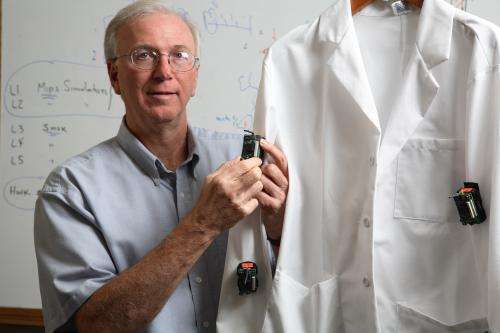What happens when the right app doesn't know what the left app is doing?

As more activities become automated with the touch of a button, University of Virginia computer science professor Jack Stankovic foresees a potential problem where applications for different functions might result in conflicting actions, such as opening and closing windows.
Stankovic has won a Microsoft Research Award for the Software Engineering Innovation Foundation. The awards support academic research in software engineering technologies, tools, practices and teaching methods. The title of his project is "Dependency Aware Sharing of the Internet of Things for Integrating Apps in Smart Homes."
Stankovic – also recently chosen by the University of York to receive an honorary doctorate – was among 12 recipients selected from more than 100 submissions for the highly competitive research grants of $40,000.
"Even today, you can do simple things from your phone, like you can go through the Internet and close your garage door, so these kinds of capabilities exist and they're becoming more and more frequent," Stankovic said.
His proposal is geared toward preparing for a future in which sensing and actuation in the home would become a utility, with apps created by independent developers performing energy, security and entertainment functions, among others. The focus of Stankovic's research is to anticipate, detect and resolve conflicts between the various apps.
"It's becoming obvious that the world is becoming covered with sensors and actuators, and so our vision was that eventually there will be an infrastructure for sensing and actuating in homes that we will think of as a utility," just like electricity, water or heat, Stankovic said. "However, if that vision comes to pass, what could happen is all these different applications can act in cross purposes."
For example, Stankovic and the two doctoral students on his team will look at the possibility that one app for health wants to close a window because of high pollen counts (in this scenario, the occupant has asthma), while another app to save energy wants to open a window. "And the two applications are not aware of each other and they're both running, so you have this window going open, close, open, close," he said.
The prospect of providing better home health care options for the elderly is one driving factor for Stankovic.
"Given the situation, where populations in many industrial countries are seeing higher and higher percentages of elderly and the medical systems can't handle them, we're going to require technology to help keep people in their homes, to keep people healthier and to lower costs," he said.
To resolve conflicts, which could present safety issues, Microsoft is trying to build an operating system that would control software for the home, allowing occupants to install many different devices that could be controlled through a general software layer. "So our work is to build upon this and focus on the conflicts across apps," Stankovic said.
"It's interesting to be able to look at things that are probably not going to happen for 10 to 15 years and to be kind of on the leading edge of trying to solve some of these problems," he said. "There will be a tipping point when eventually there are so many sensors and so many of these apps that it becomes important to just build a more generic infrastructure, this utility layer that then enables an explosion of applications that can be developed and run. I think a whole new marketplace will open up."
Provided by University of Virginia



















